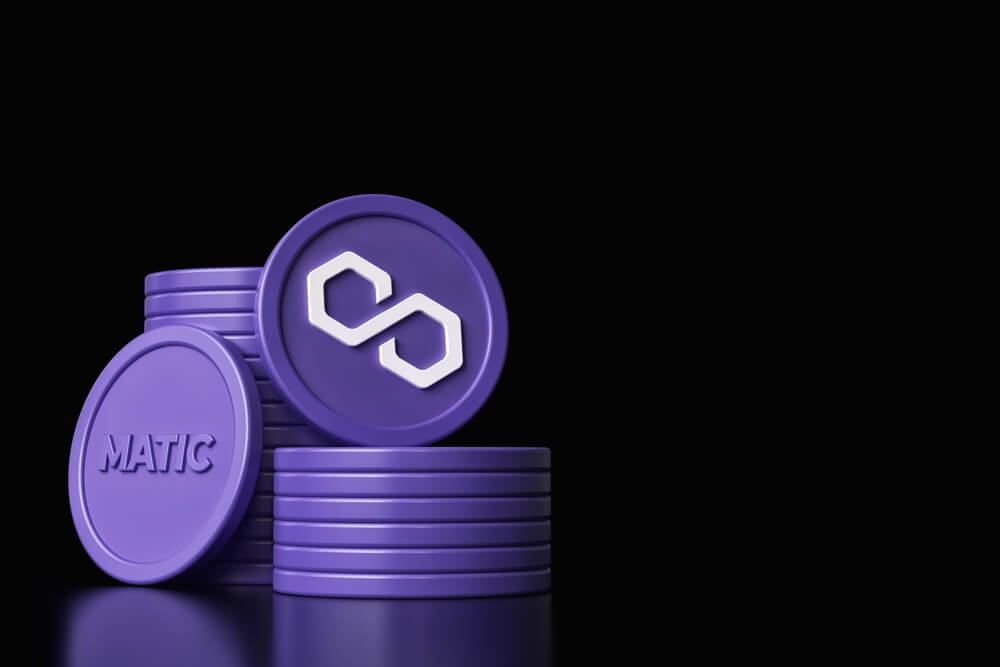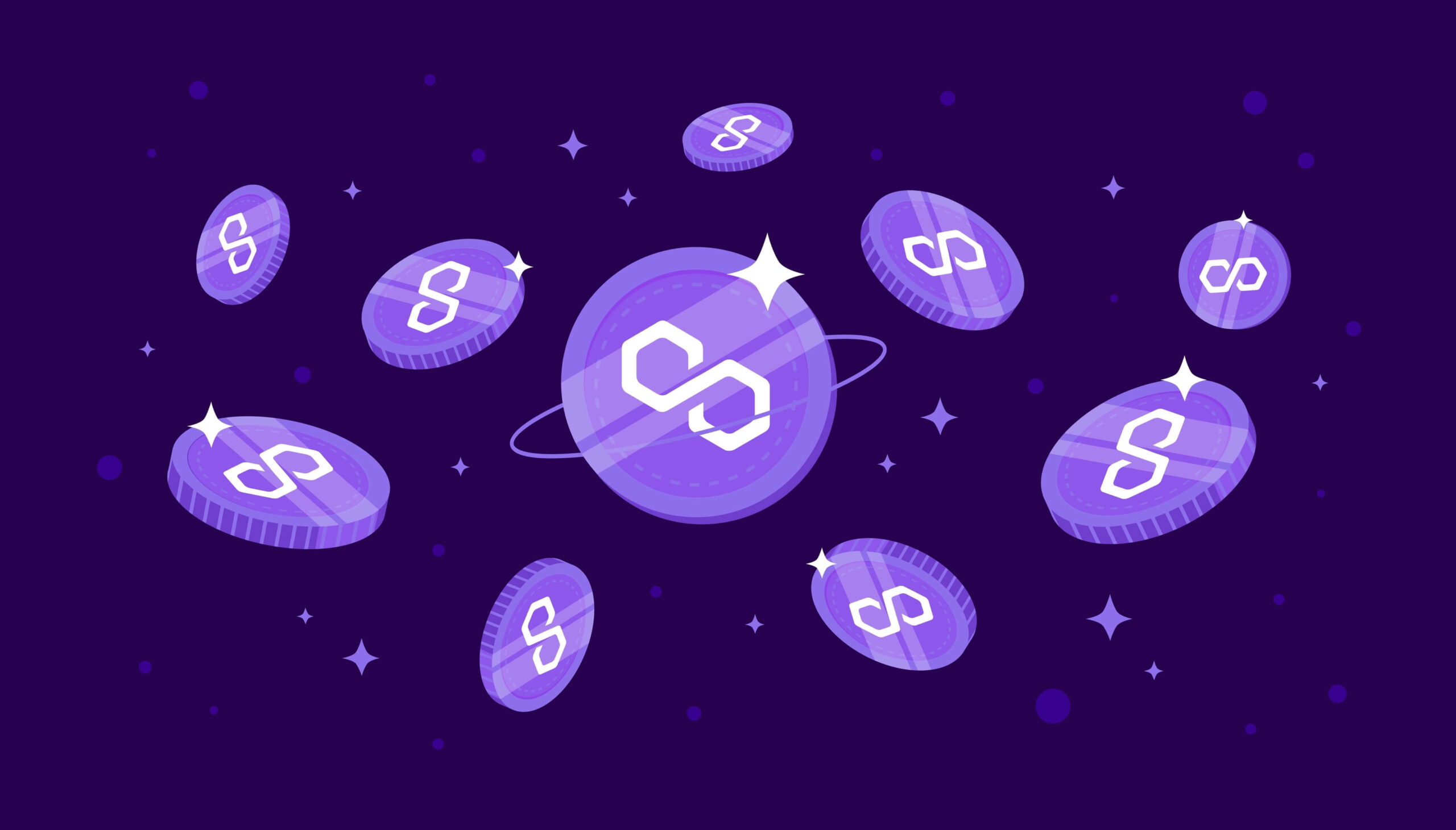If you’ve been keeping an eye on the world of cryptocurrencies, you may have come across the term “Polygon” or “MATIC.” But what exactly is it? Here is your introduction to Polygon, how it works, and its significance in the crypto space.
Simply put, Polygon is a technology that helps make cryptocurrencies more efficient and user-friendly. Specifically, it’s a layer-2 scaling solution for Ethereum, one of the most popular cryptocurrencies in the world.
The platform was created to tackle some of the biggest problems with Ethereum, like high fees and slow transaction times, and to make it easier for people to use decentralized applications (dApps).
In this article, we’ll explore the world of Polygon in more detail, taking a closer look at what it is and how it works. So sit back, relax, and read up on our introduction to Polygon.
What is Polygon (MATIC)?
Polygon (MATIC) token is a cryptocurrency in its own right, an ERC-20 token just like Ethereum’s ETH, and it’s used to pay for transaction fees. But that’s not all – MATIC is also used for staking and governance.

While the terms “Polygon” and “Matic” may seem interchangeable, Matic was actually the original name of this blockchain network. In February 2021, the team behind Matic decided to rebrand and renamed the network to “Polygon.”
But don’t worry, even with the name change, the ticker name for Polygon remains the same – it’s still MATIC. And the way the protocol works hasn’t changed either, except for the direction the team is taking Polygon in.
Polygon’s mission revolves around Ethereum, the platform that’s home to various decentralized applications. Unfortunately, Ethereum’s high traffic has made it slow and expensive to use.
That’s where Polygon comes in. As a layer-2 network, it adds on to Ethereum without changing the original blockchain layer.
Polygon offers a simpler framework for building interconnected networks, promising to expand Ethereum’s size, security, efficiency, and usefulness.
Since Polygon is a decentralized network, MATIC holders have the power to make decisions concerning Polygon’s development. They can vote or make Improvement Proposals in a democratic system.
And speaking of staking, it’s a crucial part of any network that uses the Proof-of-Stake consensus protocol.
Validators on the network are randomly assigned to produce new blocks. This is quite different from Proof-of-Work consensus mechanism, which requires validators to solve energy-intensive computer puzzles to produce blocks.
Related: Learn more about the Ethereum Network.
The History of Polygon’s Creation
Polygon, formerly known as Matic Network, has a rich history that dates back to 2017 when it was founded in India. The idea was the brainchild of four experienced developers Jaynti Kanani, Sandeep Nailwal, Anurag Arjun, and Mihailo Bjelic.
They came up with the concept of a scaling solution that aimed to improve the speed, reduce costs, and complexities of transactions on blockchain networks. Thus, Matic Network was born.
In 2020, Matic Network went live and quickly became a favorite among top players in the DeFi space, including Decentraland and MakerDAO.
However, as the demand for decentralized applications on the Ethereum blockchain grew, it became clear that Matic Network was limited in its capabilities. To address this, the team decided to rebrand the network to Polygon in February 2021.
The rebranding was more than just a change in name. Polygon’s vision is to help Ethereum expand in size, security, efficiency, and usefulness while also offering a simpler framework for building interconnected networks.
The Polygon team believes that the network’s multichain approach will make it more flexible, scalable, and secure than traditional blockchains, leading to a new era of innovation in the decentralized finance space.
In April 2019, the Polygon team raised the equivalent of $5.6 million in ETH with the sale of 1.9 billion MATIC tokens over a brisk 20-day period, which has allowed them to continue to grow and innovate in the DeFi space.
What makes Polygon (MATIC) special, and how does it work?
Polygon operates on four different layers, each of which is critical to the functioning of the network. These layers are the Ethereum layer, the security layer, the Polygon layer, and the execution layer.
Imagine a tower, with each layer playing a crucial role in its stability and strength. This is exactly how Polygon operates, and here’s the breakdown:
The Ethereum Layer
At the base of this tower is the Ethereum layer, with Polygon smart contracts acting as its representatives. These contracts ensure transaction finality, staking, and dispute resolution, making them an essential addition to Polygon’s services.
The Security Layer
Moving up, we come across the security layer, which provides additional protection to connected blockchain networks. By offering “validators as a service,” Polygon can delegate its network of validators to help clients achieve consensus in a decentralized way.
The Polygon Layer
The middle layer is the Polygon layer, an ecosystem of interconnecting blockchains that has no limit to how many networks can join. This layer acts as a bridge between blockchains, allowing seamless movement of assets between Ethereum, Polygon, and other networks.
The Execution Layer
Finally, at the top of the tower, we find the execution layer, which interprets and executes transactions agreed upon through Polygon’s PoS consensus protocol. This core layer ensures that all connected blockchains and DApps run smoothly and efficiently.
Together, these layers make up one of the fastest networks in existence. The technologies used include:
- PoS Chain: This is like the powerhouse of Polygon, adding a scalable proof-of-stake to Ethereum’s network. Think of it like a turbo engine boosting the performance of the entire network.
- Plasma Chains: These chains are like bridges between different blockchains, allowing assets to move between them as smoothly as a well-oiled machine. It’s like a network of highways connecting different cities, allowing for seamless travel and trade.
- Zk-rollups: These provide an extra layer of privacy to transactions, using zero-knowledge proofs to keep them secure. Basically, like a protective shield around your transactions, keeping them safe from prying eyes.
- Optimistic roll ups: These enable near-instant transactions on Ethereum’s chain, like a lightning-fast conveyor belt for moving assets.
Together, these technologies make Polygon one of the most advanced and efficient blockchain networks, with the ability to process transactions at lightning speed and provide top-notch security.
Storing your Polygon (MATIC) in Crypto wallets
Cryptocurrencies are like valuable treasures that need to be stored in a safe place. Polygon (MATIC) is no exception, and it can be stored in crypto wallets.
These wallets are like treasure chests that contain two keys – a public key and a private key.
Think of your public key as being like your home address. Anyone can send or receive mail to and from your address, so anyone with your public key can send you MATIC tokens.
Your private key is like your secret password; only you have access to it, and it allows you to access your MATIC tokens – just like how only you can access your home.
There are loads of different crypto wallets available these days, but the most common way to categorize them is as either “hot” or “cold” wallets. Let me tell you a bit more about each type, and give you some examples of wallets that are great for securely storing your Polygon (MATIC).
- Hot wallets: Hot wallets are the popular choice for most crypto enthusiasts, including those who own MATIC. They’re easy to use and accessible, just like the apps on your phone or computer that require an active internet connection. Some examples of hot wallets that support MATIC are Trust Wallet and Exodus Crypto Wallet.
- Cold wallets: But if you’re looking for the ultimate protection for your MATIC investments or trades, then you’ll need to consider cold wallets. These wallets come in the form of a hardware device and offer maximum security for large volumes of crypto assets. While not as user-friendly as hot wallets, cold wallets like Trezor and Ledger are excellent examples of cold wallets that support the storage of MATIC.
A closer look at Polygon (MATIC) market value
At the time of writing, the live Polygon price stands at $0.89 USD, with a 24-hour fluctuation of about 4.69%. It’s worth noting that the price of MATIC to USD is updated in real-time, so you can always keep track of the latest market movements.

According to CoinMarketCap, as of this publication on May 9th 2023, Polygon (MATIC) ranks at #9 by total market cap. This indicates that many investors have already recognized the value of Polygon and are willing to invest in its future.
With a circulating supply of 9,249,469,069.28 MATIC coins (as of this publication) and a maximum supply of 10,000,000,000 MATIC coins, Polygon has a strong foundation that can support its growth in the future.
As always, it’s important to conduct your own research and make informed decisions when it comes to investing in any cryptocurrencies, including Polygon (MATIC).
Polygon for online crypto gambling
Polygon (MATIC) is now one of the latest cryptocurrency options available to wager for online crypto gambling at Gambulls.
Gambulls Casino is an online crypto casino featuring an extensive library of crypto casino games ranging from slots, roulettes, jackpots, sports betting, and many more.
The addition of Polygon (MATIC) for wagering your bets offers an array of benefits that make online gambling even more fun and convenient. Polygon is a reliable and efficient payment method, offering lightning-fast transaction speeds and low fees.
This means you can deposit and withdraw your funds quickly and easily, making the entire process seamless and hassle-free. Plus, with Gambulls Casino as your go-to online casino, you can be sure that your funds are safe and secure every step of the way.
Keep in mind that cryptocurrencies like Polygon are highly volatile assets. Their value can fluctuate greatly based on a variety of factors, such as market sentiment, geopolitical events, institutional backing, and community adoption. Past performance of Polygon – or any cryptocurrency, does not guarantee future outcome.
As a result, it’s always a good idea to conduct your own research and gain a deeper understanding of the context before investing in any crypto or investment opportunity. By taking the time to do so, you’ll make more informed decisions and reduce your risks in the long run.
Additionally, as with any gambling and casino game, be sure to understand your limits and play responsibly.
Looking to gamble with Polygon? Browse our library of casino games at Gambulls.

